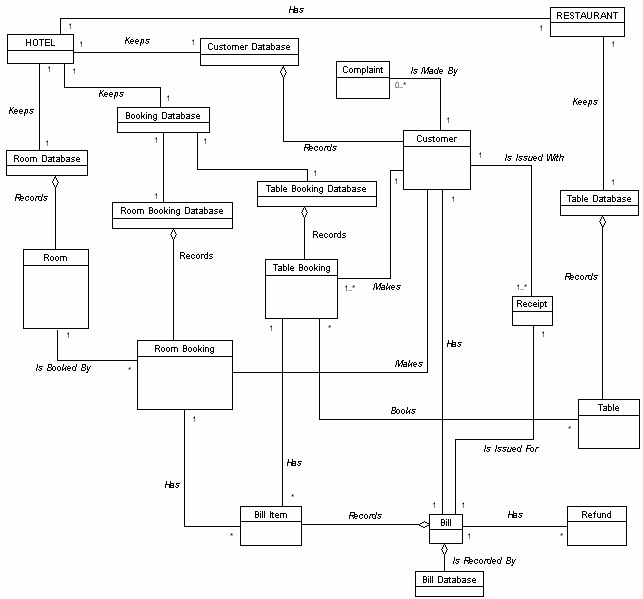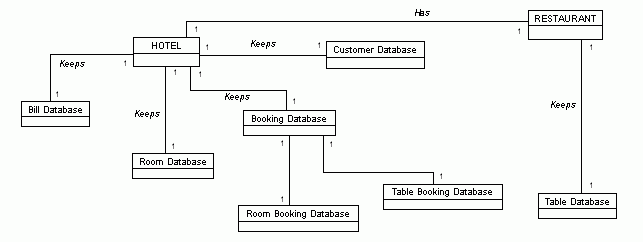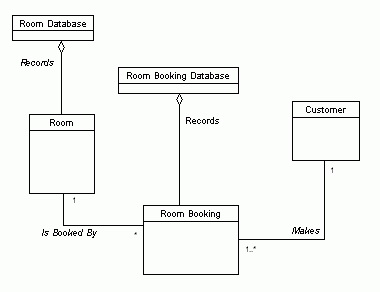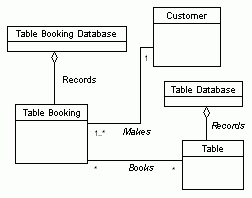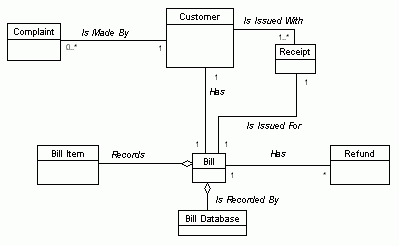Conceptual Diagram
Figure 3.1 : The conceptual diagram for the system (with the class attributes not shown)
The conceptual diagram (figure 3.1) has undergone several modifications during the course of its life, making the system more comprehensible with each change.
Each real-world object within the hotel has its own class within the software model to aid in the structure of the programming code and the use of object-oriented design techniques. The relevant attributes of each real-world object have also been assigned to the class representing it within the model to give a more realistic representation.
The table below shows each class along with its associated attributes.
|
Class Name
|
Attributes
|
|
Hotel
|
|
|
Restaurant
|
|
|
Customer Database
|
|
|
Room Database
|
|
|
Table Database
|
|
|
Booking Database
|
|
|
Room Booking Database
|
|
|
Table Booking Database
|
|
|
Bill Database
|
|
|
Customer
|
- Customer Number
- Surname
- Other Names
- Address
- Post Code
- Telephone Number
|
|
Room
|
- Room Number
- Standard Of Room
- Number Of Beds
- Type Of Beds
- Standard Tariff
- Status
|
|
Table
|
|
|
Room Booking
|
- Booking Number
- Arrival Date
- Departure Date (Estimated)
- Number Of People
- Standard
- Discount
- Guest Checked In (Boolean)
- Special Requirements
|
|
Table Booking
|
- Booking Number
- Date
- Time
- Number Of People
|
|
Bill
|
|
|
Bill Item
|
|
|
Refund
|
|
|
Receipt
|
|
|
Complaint
|
|
Several databases exist inside the system to store all of the information regarding the hotel (figure 3.2). Each database holds all of the objects for a particular class. These can be easily searched for records and added to if necessary.
Figure 3.2 : Part of the conceptual diagram showing the databases
The conceptual diagram can be split up into three distinct areas that demonstrate how the system is made up. The first of these is concerned with rooms.
Figure 3.3 : Part of the conceptual diagram showing part of the Hotel side of the system
Figure 3.3 shows the relationships between the customer and a room when a booking has been made, and how the data associated with the booking is stored by the system.
Figure 3.4 : Part of the conceptual diagram showing part of the Restaurant side of the system
Figure 3.4 shows how a customer is associated with a table when a table booking is made by use of the table booking class, and how the information is stored by the system.
Figure 3.5 : Part of the conceptual diagram showing how bill information is stored
Figure 3.5 shows how bill items are associated to a customer and how they are stored by the system in the Bill Database.
